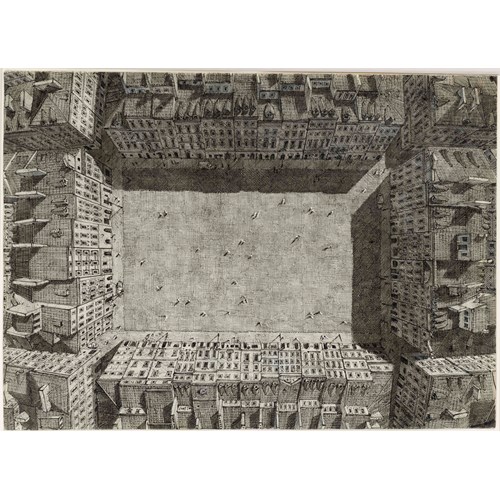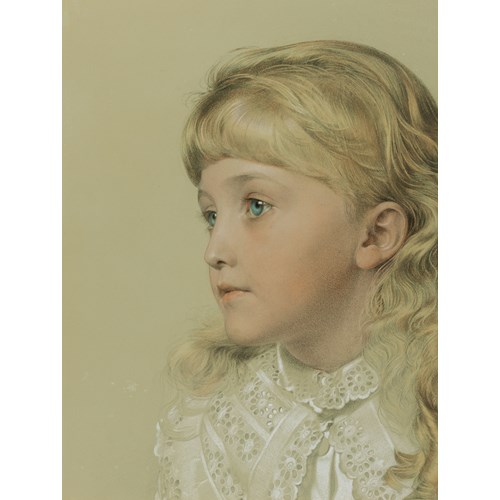Jean-François MILLET
The Return from the Fields (The Evening Star)
Date 1873
Epoque 1850-1900, 19th century
Origine France
Medium Charcoal on canvas
Dimension 35.3 x 43.7 cm (13⁷/₈ x 17¹/₄ inches)
353 x 437 mm. (13 7/8 x 17 1/4 in.) [canvas]
Many of Millet’s finest drawings are studies of peasant men and women at work. This was a world he knew well, and one that he was born into. As a young boy in the small village of Gruchy in Normandy, Millet had worked alongside his father on his family’s farm - looking after the animals, tilling the soil, sowing and reaping – and remained proud of these experiences throughout his later life as an artist. Millet remained deeply attached to the idea of the French countryside, and to the people who lived and worked there, and strove to accurately and sympathetically represent their daily lives in the paintings he sent to the annual Salons. As Herbert has written, ‘[Millet’s] view of the peasant was a conservative one. He was convinced that man is condemned forever to bear his burdens, hence he made the peasant into a victim of unyielding fate that kept him in the unchanging cycle of work and exhausted repose, the cycle that has been his lot since ancient times.’ But at the same time Millet’s peasant figures are often imbued with a sense of dignity, and at times even of grandeur; as Herbert points out, ‘His work joined in a complex process that resulted in the elevation of common man to the rank of history painting.’
With a composition consciously reminiscent of the Biblical subject of the Flight into Egypt, this charcoal drawing exemplifies Millet’s approach towards expressing the dignity of peasant life by associating it with the vocabulary of religious art, thereby combining the spiritual and the secular. Crossing a barren plain and outlined against the sky, a family returns home with three sheep at the end of the day. The woman rides on a donkey with her feet in a basket, while a man follows behind, holding a fork. Millet spent many early evening hours on the plain of Chailly, on the edge of Barbizon, and he once said that ‘It is astonishing towards the approach of night how grand everything on the plain appears, especially when we see figures silhouetted against the sky. They look like giants.’
Datable to c.1873, this charcoal sketch on canvas is a preparatory study for a painting of that year entitled The Return from the Fields (The Evening Star), which appeared at auction in 1991. One of Millet’s last great paintings, The Return from the Fields is the final treatment of a subject to which he had returned repeatedly throughout his career. Included in the artist’s studio sale in 1875, the painting was purchased at the auction for 6,050 francs by the collector Jean Dollfus, who also later owned both the present sheet and another compositional sketch for the same picture6, now untraced. A study for the donkey is last recorded with the art dealer Hector Brame in Paris in 1938.
Millet had earlier treated a similar subject and composition in a finished conté crayon and pastel drawing entitled Twilight (Crépuscule), drawn between 1859 and 1863 and today in the Museum of Fine Arts in Boston. A stylistically comparable work of a similar subject and date, also drawn in charcoal on canvas and a study for a lost painting of The Return of the Shepherdess of 1874, appeared at auction in London in 1988.
The first owner of this late drawing was the prominent Alsacian industrialist and collector Jean Dollfus (1823-1911). Dollfus owned numerous paintings and drawings by Corot, as well as works by Courbet, Daumier, Delacroix, Rousseau, Renoir, Sisley and many others. At the posthumous sale of Dollfus’s collection in Paris in 1912, this drawing and the large painting for which it is a study were both acquired by the Knoedler gallery in New York and almost immediately sold by them to the collector Robert Paterson of Massachusetts.
The J.F. Millet stamp at the lower left of the sheet was applied to the unsigned works dispersed at the sale of the collection of the artist’s widow in April 1894.
Date: 1873
Epoque: 1850-1900, 19th century
Origine: France
Medium: Charcoal on canvas
Dimension: 35.3 x 43.7 cm (13⁷/₈ x 17¹/₄ inches)
Provenance: The widow of the artist, Catherine Lemaire, Mme. J.-F. Millet (Lugt 1815)
Her estate sale, Paris, Hôtel Drouot, 24-25 April 1894, lot 25 (‘Le Départ pour le marché. Dessin au fusain. Haut., 28 cent.; larg., 26 cent.’)
Jean Dollfus, Paris
His posthumous sale, Paris, Hôtel Drouot, 4 March 1912, lot 83 (‘Le Retour des champs (l’Etoile du soir)’
Knoedler & Co., New York
Acquired from them in 1912 by Robert W. Paterson, Lenox, Massachusetts
By descent to his wife, Marie Louise Paterson, New York
Her estate sale, New York, Parke-Bernet Galleries, 17 March 1938, lot 8
James Kirkman, London, in 1984
Galerie Prejger, Paris
Bought from them in April 1984 by Jan Krugier and Marie-Anne Poniatowski, Geneva.
Literature: New York, Christie’s, 19th Century European Paintings, Drawings, Watercolors and Sculpture, 16 October 1991, p.76, under lot 88; Alexander Dückers, ed., Linie, Licht und Schatten: Meisterzeichnungen und Skulpturen der Sammlung Jan und Marie-Anne Krugier-Poniatowski, exhibition catalogue, Berlin, 1999, illustrated p.411; Philip Rylands, ed., The Timeless Eye: Master Drawings from the Jan and Marie-Anne Krugier-Poniatowski Collection, exhibition catalogue, Venice, 1999, illustrated p.411.
Plus d'œuvres d'art de la Galerie


_T637260072418616402.jpg?width=2000&height=2000&mode=max&scale=both&qlt=90)






